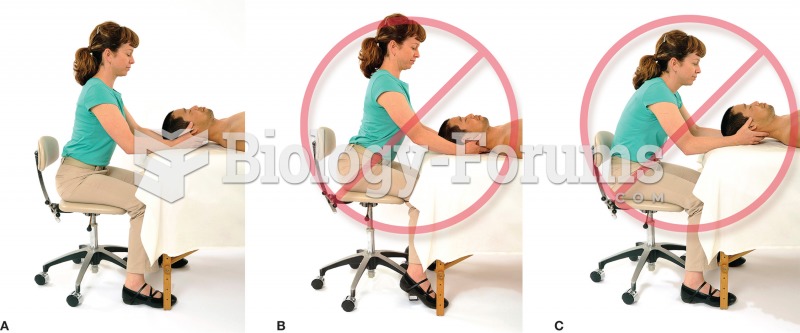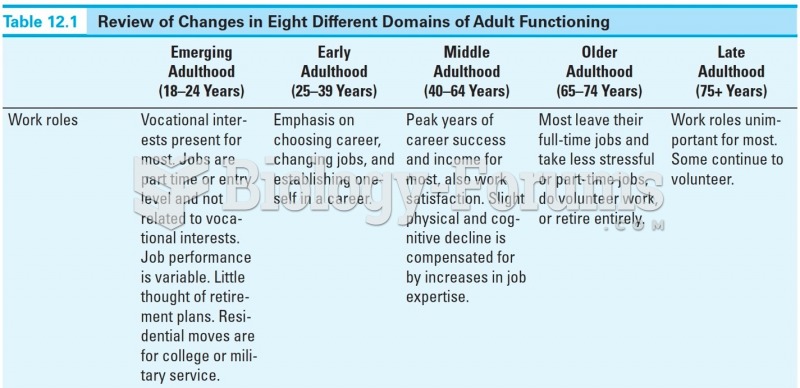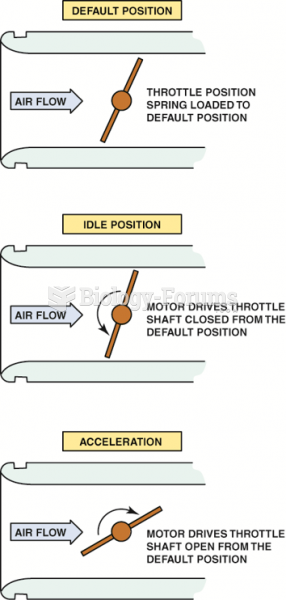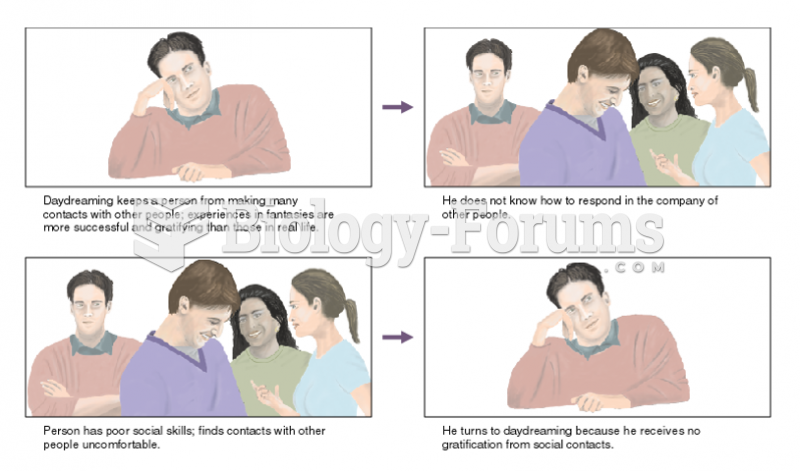Answer to Question 1
Correct Answer: 2, 3, 4
The client's actions may indicate that the client is experiencing pain. The client may be experiencing chest pain. The nurse should determine whether the client is experiencing chest pain prior to continuing the focused interview. Pain can result in increased blood pressure, pulse, and respiratory rate. The nurse should determine if the client is experiencing pain and seek to treat the pain prior to continuing with the focused interview. The client's actions are also consistent with anxiety. Anxiety stimulates the sympathetic nervous system, which can result in vasoconstriction, high blood pressure, increased heart rate, and respiratory rate. It will be appropriate to assess the client's temperature, but the nurse should first determine whether the client is in pain or is experiencing anxiety. The client's vital signs and actions are more likely associated with hyperthyroidism.
Answer to Question 2
Correct Answer: 1, 3, 4, 5
A client who has a family history of varicose veins has an increased risk for developing them. Hair stylists are more likely to be on their feet while they are working and this does result in an increase in their risk of developing varicose veins. People who have been pregnant multiple times have an increased risk for developing varicose veins. People who are obese have an increased risk for developing varicose veins. Risk factors for varicose veins include people who are of Irish or German descent. People of Japanese descent do not necessarily have an increased risk of developing varicose veins.






